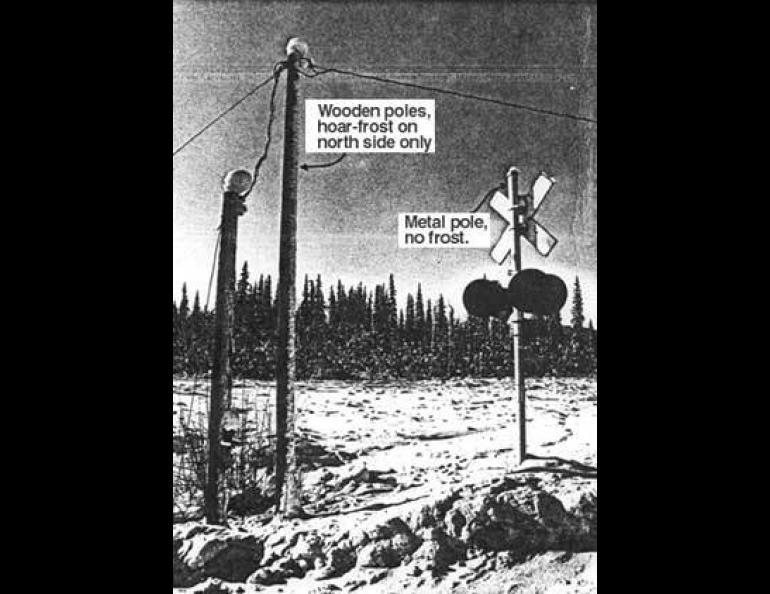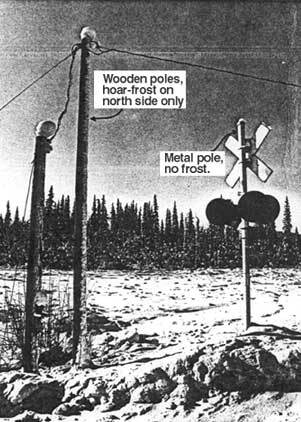
Hoarfrost Formation
Among winter's beauties are the intricate crystals--called hoarfrost--that form on branches, wires, poles and other objects. Hoarfrost is a sort of wintertime cousin to summer's dew and develops by similar processes.
Dew and hoarfrost accumulate on objects when there is more moisture in the air than the air can carry. Warm air carries in suspension more liquid water than does cold air.
The temperature at which the air is totally saturated is called the dew point. If the temperature of humid air is lowered until the humidity is 100%, then the dew point has been reached. Further cooling requires that the air lose part of its suspended water; the loss can come through rainfall, snowfall or the formation of dew or hoarfrost.
Curiously enough, pure water suspended in clean air remains in liquid form down to temperatures near -40°C (also -40°F). Below that temperature, the liquid droplets turn to ice--ice fog being a possible result. However, the normal ice fog known and loved in some northern cities comes from manmade injection of water into cold still air.
If when air is cooled down it contains enough water to cause the dew point to be above freezing, then dew forms. But if the air is sufficiently dry that the dew point is below 0°C (32°F), then hoarfrost forms.
Hoarfrost consists of crystalline structures that grow from water vapor evaporated from liquid droplets suspended in air. Once hoar-frost crystals form, they can remain as long as conditions for their existence are favorable. But if the crystals or the air around them are warmed up, evaporation from the crystal surfaces leads to their demise. Hence in late winter we see the sun's warming rays removing hoar-frost from the south sides of objects.
It is worth one's while to look at hoarfrost crystals closely. They occur in an intricate variety of forms--needles, cups, plates, fern-like and feather-like--depending upon the temperature at which they developed.





